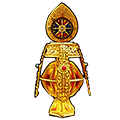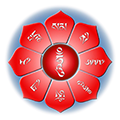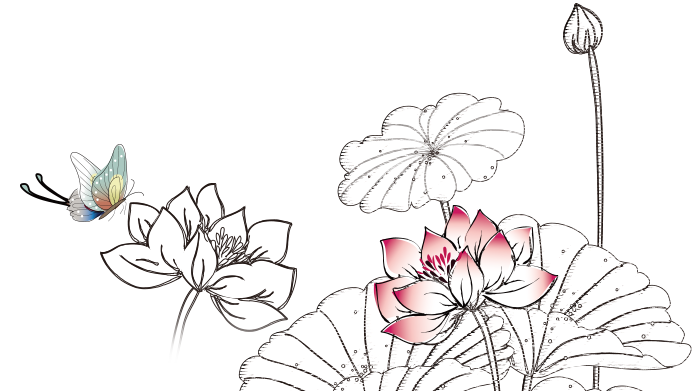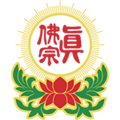Day 6: The Seven Bodhyanga/Investigation
Today is the sixth day of the discourse on An Overview of the Buddhadharma given here at the Rainbow Villa. The topics to be discussed today will be the Seven Bodhyanga (branches of Enlightenment) and the Eightfold Path.
Actually, during my year-long discussion of the Maha Prajnaparamita Heart Sutra, which I just completed two weeks ago, I gave an extensive commentary on the Eightfold Path. If you paid close attention during those talks, you will have realized that, in the Four Noble Truths which are `accumulation, suffering, path, and extinction of suffering,` the `path` refers to the Eightfold Path. In the future, when you want to experience and actualize the Eightfold Path at a deeper level, you may go and read the transcript from my discourse on the Maha Prajnaparamita Heart Sutra.
The Seven Bodhyanga
We will first discuss the Seven Bodhyanga, which are branches of bodhi-illumination (Enlightenment). What are the Seven Bodhyanga? They also may be called the seven kinds of awareness. Like pillars, these seven kinds of awareness give support to seven kinds of wisdom. Where may one find reference to the Seven Bodhyanga? In the Amitabha Sutra. People reborn to Amitabha`s Sukhavati continue to develop the Seven Bodhyanga. The seven rows of jewelled trees, together with the birds of Kalavinka and Jivajivaka which are mentioned in the sutra, enable one to experience these seven kinds of awareness. The Seven Bodhyanga are: Investigation, Effort (which was already discussed in the Six Paramitas section of this discourse), Joy, Mindfulness, Alert Ease, Samadhi (which was also discussed earlier), and Relinquishing.
Investigation
The key subject of my discussion today will be Investigation. It is extremely important to have this awareness in the process of learning the Buddhadharma, for one cannot learn and practice every single Buddhist practice which exists. The Buddhadharma knowledge is as vast as the ocean, and it is impossible for one to learn all of it, even if one devotes one`s whole life to this endeavor. Therefore, one has to make an investigation into the Dharmas and select those Buddhist practices which are most appropriate for oneself. In fact, such Investigation has led to the division of the Buddhadharma into many different schools and sects.
In the past, a Buddhist monk may have decided that a certain sutra was the most inspirational to him, and he was able to obtain many insights from studying it. Thus he went and established a new school based on that particular sutra. Each of the ten best-known Buddhist schools has its own emphasis and orientation. For example, the Abhidharma School emphasizes the tenet of `egolessness.` The Satyasiddhi School, which is based on the Satyasiddhi Treatise, emphasizes the nature of the emptiness of both `ego` and `Dharma.`
Among the teachings of the many schools there also exist doctrines which are contradictory to each other. To my knowledge, for example, the Abhidharma School teaches that the Bardo state is a concrete state. In other words, the Abhidharma School believes in the existence of the soul which takes on a form in the Bardo state. On the other hand, the Satyasiddhi School emphasizes that there is no Bardo state, nor any existence of the soul. Thus these two schools contradict each other. One affirms the soul while the other negates it. What, then, is the Mahayana viewpoint regarding the question of the soul? The Mahayana view is, `Some have souls, and some do not.` It may be hard for one to comprehend why there are three different viewpoints regarding the existence of the soul. One says the soul exists, one says the soul does not exist, and one says the soul exists but only in some conditions. How is one to decide which school`s teaching is correct? Actually, what Mahayana means is that great sages or adepts do not have to pass through the Bardo state but can ascend directly to the realm of the Buddhas. The bypassing of the Bardo state skips the stage of the soul. In my case, when the day comes for me to depart from this physical existence, I will transform directly into the Rainbow Light and enter into the realm of the Buddhas. There will not be a transitional stage of the soul. On the other hand, Mahayana also teaches that greatly evil people skip the Bardo state too. When a person with heavy negative karma dies, there is no taking shape of the soul in the Bardo state because he will descend directly to the realm of the Hungry Ghosts. From these three different beliefs, one may choose the one that personally makes the most sense.
What, then, does the Ch`an (Zen) school emphasize? Ch`an emphasizes that `Enlightenment is attained when one glimpses into the Innate Nature.` One becomes the Buddha when the Original Nature is intuited. This is the main focus of Ch`an.
The T`ien-t`ai School stresses the tenet of `One Mind and its Three Aspects.` The three aspects are `the absolute, the relative, and the mean.`
The Hua-yan school stresses the tenet of `Ten Divisions Six Appearances.` In the future, if the opportunity arises, I will talk about the practice method of each of these schools. You may want to make an investigation into one of them, if it appeals to you.
There is also the Fa-hsiang School (Yogacara School) which holds that `everything is only ideation.`
The Pure Land School is the most popular school nowadays because it is the most convenient kind of Buddhism to practice. The Pure Land School teaches that, when one practices recitation with one-pointed concentration, one can also see into one`s Innate Nature and attain Buddhahood. The Pure Land School is based on three sutras (the Sukhavati-vyuha, the Amitabha sutra, and the Amitayurdhyana-sutra), and on one treatise (the Rebirth Treatise).
There is the Vinaya School which stresses the importance of precepts and is based on the Four-division Vinaya. Disciplines (precepts) lead to stability, and stability gives rise to wisdom. When one becomes an adept in meditative stability, one can also reach Enlightenment.
There is the Three Treatises or Madhyamika School. The three treatises are, the Madhyamika Treatise, the Hundred Verses Treatise, and the Twelve-Points Treatise. Collectively, their main tenet is again the nature of the emptiness of the self.
There is also the Esoteric School. The True Buddha Tantric Dharma is an esoteric teaching. The teaching of the Esoteric School is mainly based on the Vajra Apex Sutra and the Vairocana Sutra. Within the esoteric structure, its first (or external) level of practice deals with purification of the body, speech, and mind. The second (or internal) level of practice deals with the Energy Yogas of `chi, channels, and light drops.` When the body, speech, and mind of an ordinary being are purified, transmuted, and unified, one sees one`s Original Nature and attains Enlightenment.
Altogether, these are the ten best-known Buddhist schools in Chinese Buddhism. One has to make a selection from among all these schools. Say we have here, in a row, ten noodle shops, and each one claims that its noodles are the best. So far, I have not heard anyone admitting that its noodles are inferior to others. They all claim that their products are the best and the price is reasonable. Some people like to try their luck by random selection. In fact, when any one of these noodle shops can fill one`s stomach, the choice then comes down to the affinity or the causal connections one has with any particular shop.
Similarly, there are many different Buddhist schools and every school claims to be the best. In the Shurangama-sutra, when Buddha Shakyamuni inquired about the methods of practice of the twenty-five Bodhisattvas, he was told that some used the method of fire to attain the Flame Samadhi, some used the method of water to attain the Water Samadhi, while Kuan Yin Bodhisattva reported that he had used the Inner Hearing Method. Nowadays, some people still practice the methods of inner hearing and inner light vision.
During his lifetime, the Buddha frequently emphasized the cultivation of the Flame Samadhi and the Four Noble Truths. To succeed in the practice of the Flame Samadhi is to realize the fourth level of arhathood. There are also many great Bodhisattvas who have arrived at Buddhahood through their own particular practice methods. One should therefore make a decision based on one`s own preferences. Select the school for which one has the strongest affinity, and turn that into the root of one`s Buddhist practice.
This is Investigation. You have to make an investigation and then make a selection. Which school are you going to pick today? [Audience replies, `The True Buddha School.`] [laughter and audience laughter] Well, you have made the right decision! [laughter and audience laughter and applause] This is Investigation. To select the right Buddhist practice for oneself, one must use one`s judgement. If one does not care, but prefers to wear a blindfold ?just like the pandas, Green Hornet, Batman or whatever-man who all wear blindfolds around their eyes ?one may try one`s luck by groping around to find which school one will end up in. One might call it fate, but such `fate` may not be the best, as it is based on a blind decision.
Investigation means that one has to use one`s wisdom to judge the right practice for oneself. It is the same with taking refuge in a teacher. One has to observe and make a wise judgement. Otherwise, if one does not care and just enters any tavern randomly, one might just end up as an ingredient for the `human flesh buns.` In the Chinese classical novel, Water Margin, there are evil taverns that sell `human flesh buns.` When one goes unawaringly into such a tavern, if the storekeeper happens to run out of raw materials, and sees that one is plump and tender and has a lot of grease, [laughter and audience laughter] one will be slaughtered and turned into snacks. Similarly, there are many false Dharmas which claim to be the true Buddhadharma. So be careful and don`t jump on board a pirate ship, or enter into an evil tavern. Instead of enjoying a great meal, one ends up as somebody else`s snack. To avert such a happening, requires investigation into the Dharmas.
An Overview of the Buddhadharma Day 6
A discourse by Living Buddha Lian-sheng, given at Rainbow Villa, May 10th, 1993.
Translated by Janny Chow of Purple Lotus Society from the Chinese Transcript




